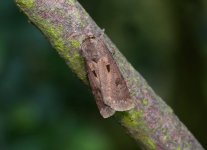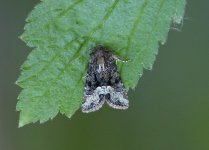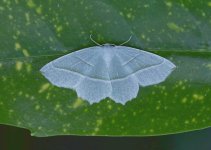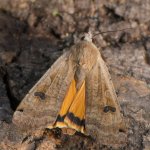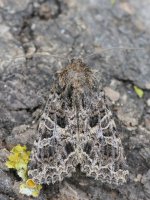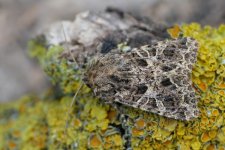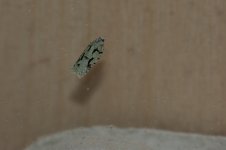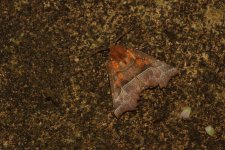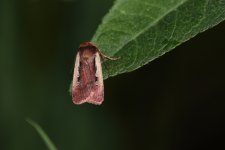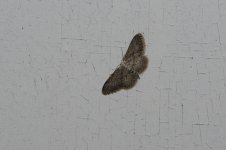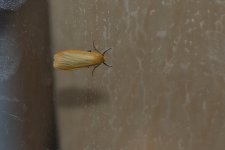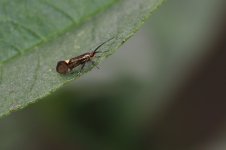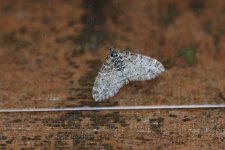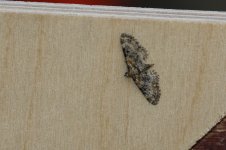-
Welcome to BirdForum, the internet's largest birding community with thousands of members from all over the world. The forums are dedicated to wild birds, birding, binoculars and equipment and all that goes with it.
Please register for an account to take part in the discussions in the forum, post your pictures in the gallery and more.
You are using an out of date browser. It may not display this or other websites correctly.
You should upgrade or use an alternative browser.
You should upgrade or use an alternative browser.
May Moths 2023 (2 Viewers)
- Thread starter Farnboro John
- Start date
More options
Who Replied?Farnboro John
Well-known member
Day out today targeting a tick. Wandered all over Powerstock Common all morning getting hot, dry and sore-footed but also getting a brief view of Narrow-bordered Bee Hawk-moth which didn't give us any chance of a photo but was a nice tick for me! Other day-flying moths present and NFY included Mother Shipton, Burnet Companion, Speckled Yellow and Pyrausta purpuralis, while a normal night-flyer zipping round a bit of woodland edge eventually landed long enough for pix to determine it was a Pebble Hook-tip (NFY).
There were butterflies out as well: Common Blue, Small Copper, Grizzled Skipper and Green Hairstreak all NFY while Brimstones, Small White, Orange Tip and Speckled Wood just got the day list up.
On the way home in the afternoon we dropped into Martin Down where very fresh Adonis Blues, Small Blues, Small Heaths, Brown Argus and some zonkingly fresh Marsh Fritillaries were all NFY and a Peacock further enhanced the day list.
Moth wise I can only remember adding Cinnabar there (NFY).
Other stuff at Powerstock: Broad-bodied Chaser, Azure Damselfly, Beautiful Demoiselle; singing Nightingale briefly; a Badger on the approach road in broad daylight.
Other stuff at Martin Down: Cuckoo for the year, Burnt Tip Orchids.
Cheers
John
There were butterflies out as well: Common Blue, Small Copper, Grizzled Skipper and Green Hairstreak all NFY while Brimstones, Small White, Orange Tip and Speckled Wood just got the day list up.
On the way home in the afternoon we dropped into Martin Down where very fresh Adonis Blues, Small Blues, Small Heaths, Brown Argus and some zonkingly fresh Marsh Fritillaries were all NFY and a Peacock further enhanced the day list.
Moth wise I can only remember adding Cinnabar there (NFY).
Other stuff at Powerstock: Broad-bodied Chaser, Azure Damselfly, Beautiful Demoiselle; singing Nightingale briefly; a Badger on the approach road in broad daylight.
Other stuff at Martin Down: Cuckoo for the year, Burnt Tip Orchids.
Cheers
John
creaturesnapper
creaturesnapper
Cool clear night with moonlight , so not expecting much in the trap . It wasn’t too bad though , 5 Pale Mottled Willow , 2 Light Emeralds , 2 Heart and Dart , one of which was very dark , 1 Willow Beauty and probable Marbled Minor , well marked but did not examine closely.Also lots of LBAM and a Bumble Bee , none too pleased with the interruption to it’s sleep. I found a couple more species lurking in the bushes near the trap , Green Pug and White Ermine.
Attachments
Last edited:
walwyn
Well-known member

Still only getting singles at most trebles if I count those around the trap in the mornimg. Surprised to find a Poplar Hawk Moth in there this morning. Along with something else that was large on the same egg box. Removed the PHM and set aside the egg box as the other thing was pretty dormant. Took plant of photos of the Hawk moth and released it. Came back and the other thing had sodded off. SIGH! Photographed a Broken-barred carpet, Buff and White Ermine, and a Vine's Rustic. Didn't bother with the Treble Lines. Released them all and returned to green house to tidy up. Buzz, buzz, buzz as the escapee reappeared.
Attachments
Farnboro John
Well-known member
Despite being on my knees after a lot of walking yesterday I put the trap out. Not that cool a night and by recent standards a decent number of moths bolstered by 10 Treble Lines, which are dominating as never before this spring. A fresh Brindled Pug too high up the window to reach, another Light Brocade (something else I don't normally get many of) but pick of the crop Brimstone and Buff Tip NFY along with Eudonia angustea tick.
John
John
Steve Lister
Senior Birder, ex County Recorder, Garden Moths.

I use a totally unofficial way of IDing Marbled Minors, taught to me by the moth legend Barry Spence at Spurn Using it your's is indeed a Marbled Minor.probable Marbled Minor
creaturesnapper
creaturesnapper
Thanks Steve
Farnboro John
Well-known member
There seem to be quite a few of these unofficial methods available for various groups. Personally I get a bit tired of people saying "BTW what they say in the field guide doesn't work but it can be done" but not explaining how - almost as much as people saying "gen det or nothing for this group" (the latter because I don't agree with killing for a hobby and I don't do more admin than maintaining my own lists - also because it's a hobby - so none of my records go to any recorder). I would like to see some of these methods explained for the use of all, because if they are any good they should be widely used (and who knows, could end up in the next field guide, displacing the current apparently ineffective text).I use a totally unofficial way of IDing Marbled Minors, taught to me by the moth legend Barry Spence at Spurn Using it your's is indeed a Marbled Minor.
I'm perfectly prepared to believe in ID gurus operating on a level us normal mortals can only marvel at (I've seen Frank Greenaway identify a Brandt's Bat by smell - he did confirm it with inspection of its teeth but I swear to God he stuck his nose in the bag, sniffed it and immediately pronounced - correctly.) Such knowledge should be recorded for posterity where it is practicable to do so.
John
Farnboro John
Well-known member
Incidentally I'm not sure how the preceding post reads but it was intended as an invitation to share knowledge, not a rant. Sorry if the tone is wrong, my bad.
John
John
Farnboro John
Well-known member
Farnboro John
Well-known member
I've always found other people's pictures helpful to me but I wish everybody would label them with either the common name or scientific name. Obviously if one is looking for an ID it's fair enough not to, though kudos to those who put their best guess in the post.
John
Sharp-angled Peacock
Poplar Hawk Moth
Angle Shades
Great Prominent X 2
Light Emerald
White-point
Light Brocade
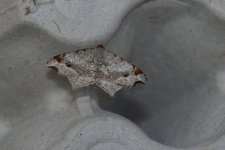
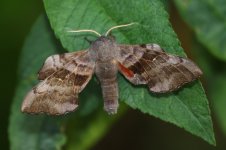
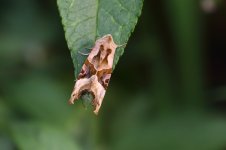
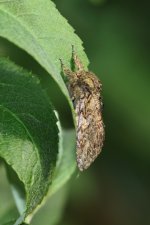
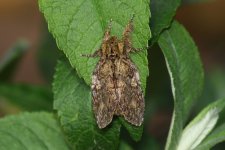
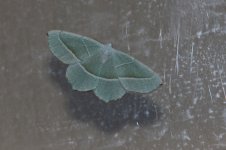
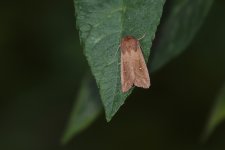
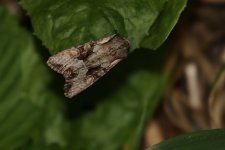
John
Sharp-angled Peacock
Poplar Hawk Moth
Angle Shades
Great Prominent X 2
Light Emerald
White-point
Light Brocade








Farnboro John
Well-known member
I'm kind of sorry some of these are on pots or parts of the trap or eggboxes, but not every moth co-operates on release. Noctuids almost invariably do, Geometers almost invariably don't. Hawk moths are fantastically co-operative. Micros mostly aren't (so far).
John
Last lot for May, including some day-flyers at Powerstock Common:
Speckled Yellow (with a pigmentless outer left wing, curiously)
Mother Shipton with a lump out of it
Pebble Hook-tip that flew up and down a woodland edge, landing for a second at a time till it nearly drove us potty!
Brindled Pug
Brimstone Moth that fell onto a snail from the leaf I tried to put it on, honest.
Buff Tip
.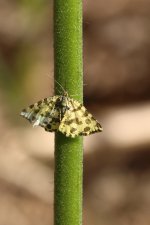
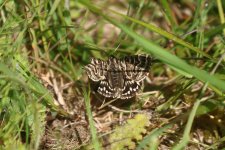
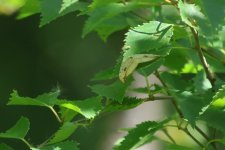
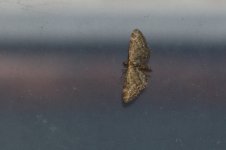
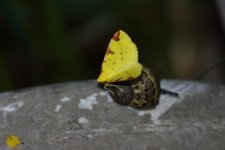
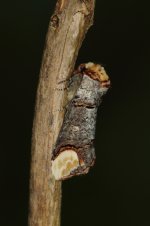
John
Last lot for May, including some day-flyers at Powerstock Common:
Speckled Yellow (with a pigmentless outer left wing, curiously)
Mother Shipton with a lump out of it
Pebble Hook-tip that flew up and down a woodland edge, landing for a second at a time till it nearly drove us potty!
Brindled Pug
Brimstone Moth that fell onto a snail from the leaf I tried to put it on, honest.
Buff Tip
.






Similar threads
Users who are viewing this thread
Total: 3 (members: 0, guests: 3)




